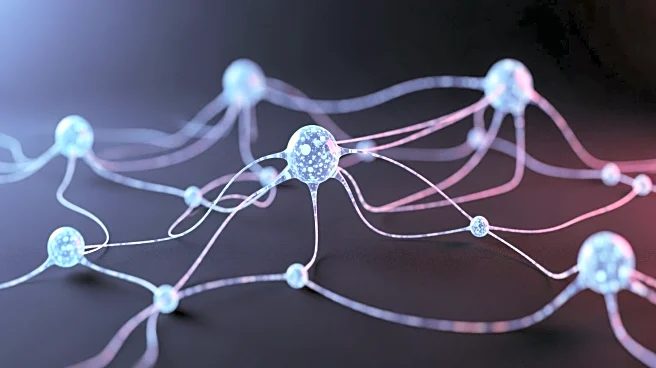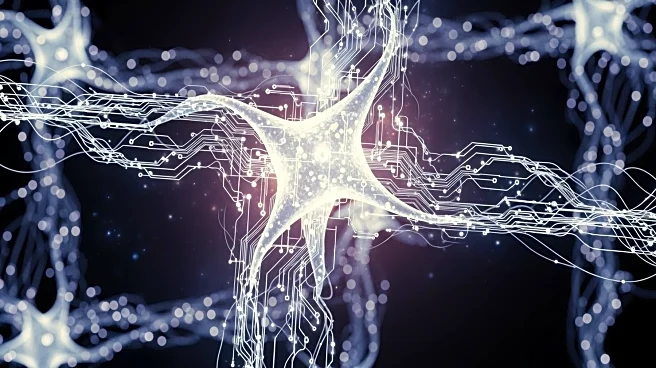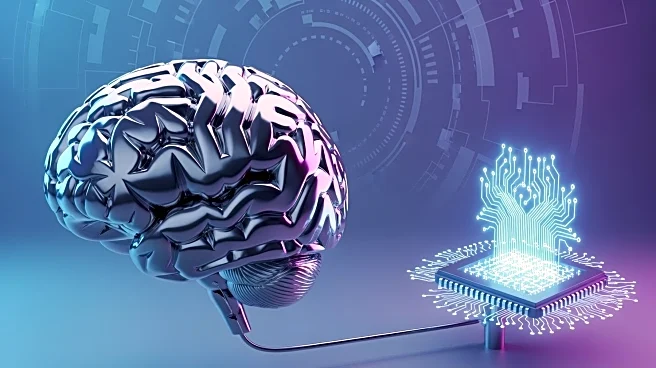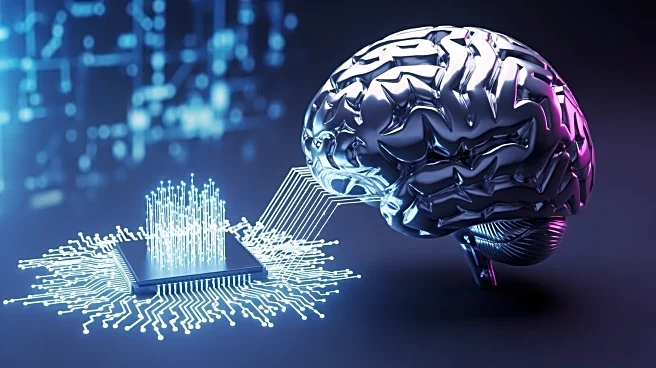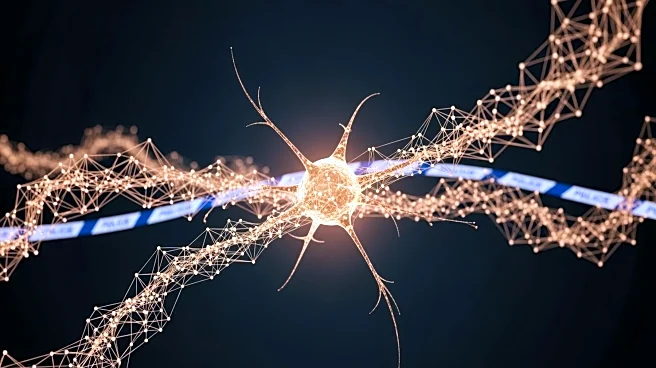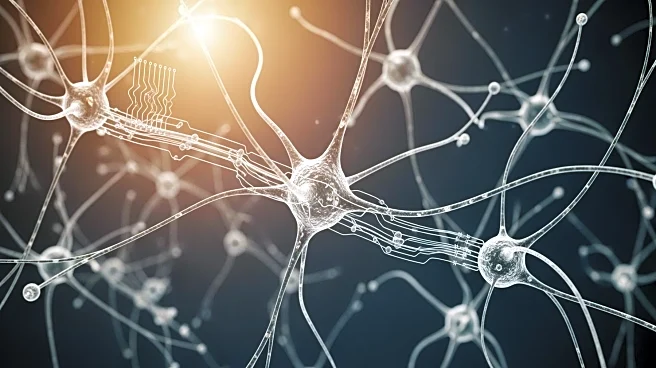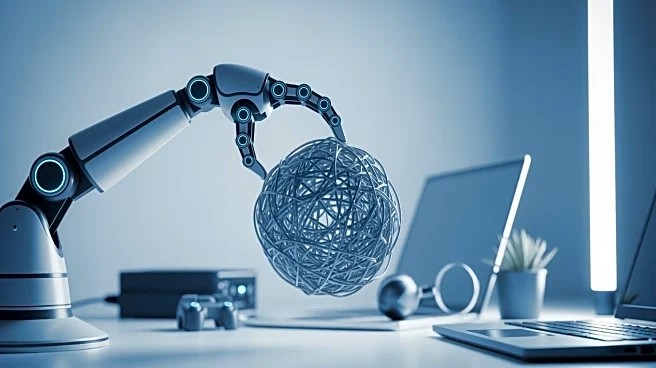What's Happening?
Recent advancements in neuroscience have led to the development of connectome-constrained recurrent networks, which aim to predict neural activity more accurately. This study introduces a 'student' network trained to replicate the activity of a 'teacher'
network, representing a neural system with an available connectome. The research explores the impact of model mismatches, such as differences in activation functions, on the accuracy of neural activity predictions. The findings suggest that training with a larger number of recorded neurons can reduce errors in unrecorded neurons, enhancing the predictive power of these networks.
Why It's Important?
This research is significant for the field of neuroscience and artificial intelligence, as it offers a new approach to understanding and modeling neural dynamics. By leveraging connectome data, scientists can improve the accuracy of neural activity predictions, which has implications for brain research and the development of AI systems. This approach could lead to better models for studying brain disorders and developing neural prosthetics. The study also highlights the potential for using connectome data to refine machine learning algorithms, contributing to advancements in AI technology.
What's Next?
Future research may focus on refining these models to further reduce prediction errors and explore their applications in various fields. Scientists may investigate the use of connectome-constrained networks in clinical settings, such as diagnosing and treating neurological disorders. Additionally, the integration of these networks with other AI technologies could enhance their capabilities, leading to more sophisticated models of brain function. As the field progresses, collaborations between neuroscientists and AI researchers will be crucial in advancing our understanding of the brain and developing innovative solutions.


